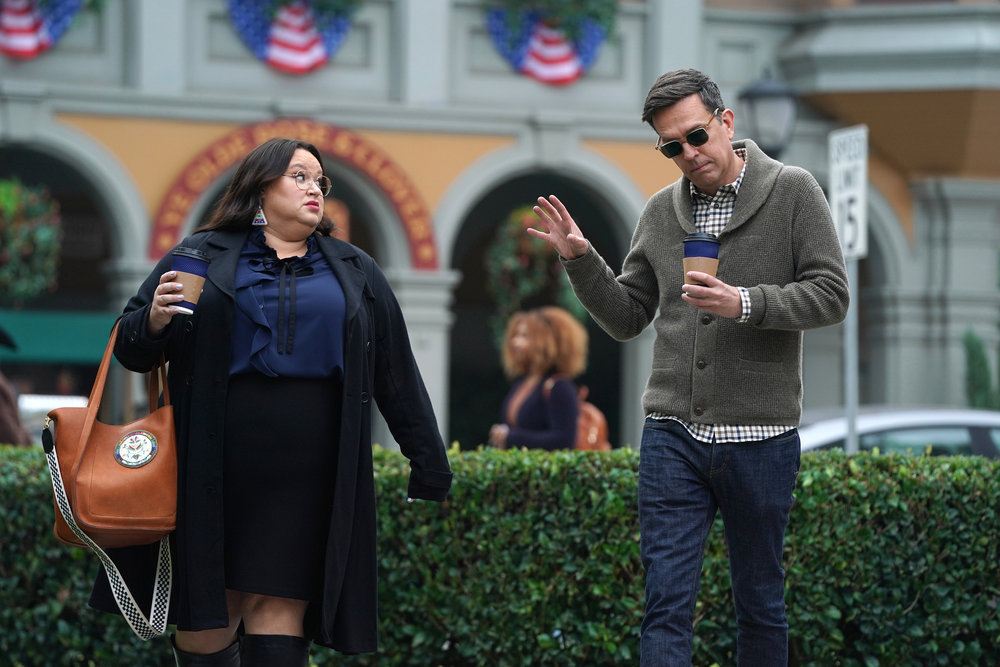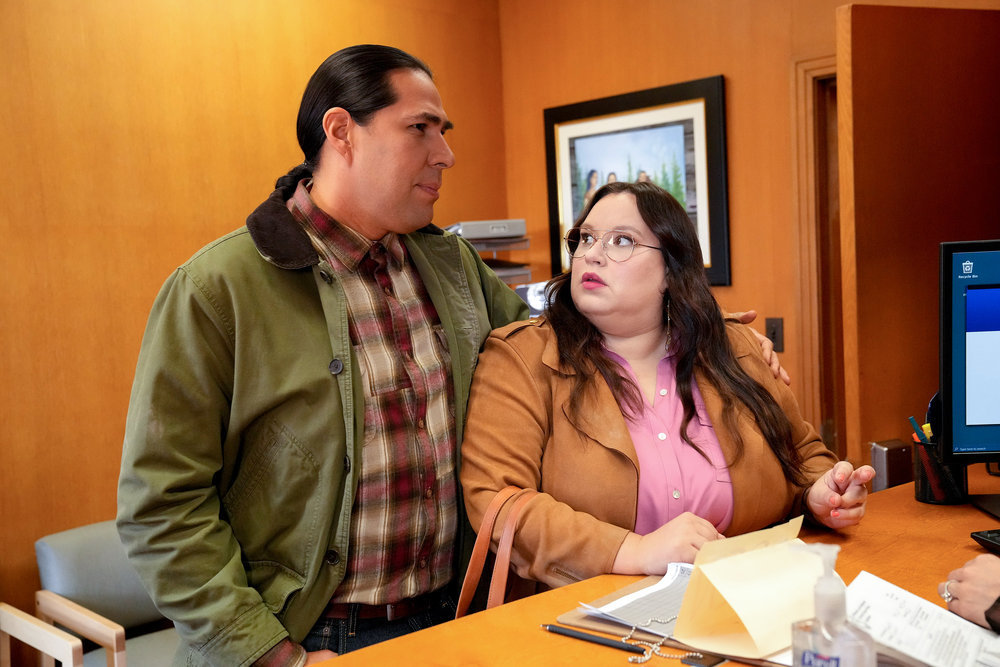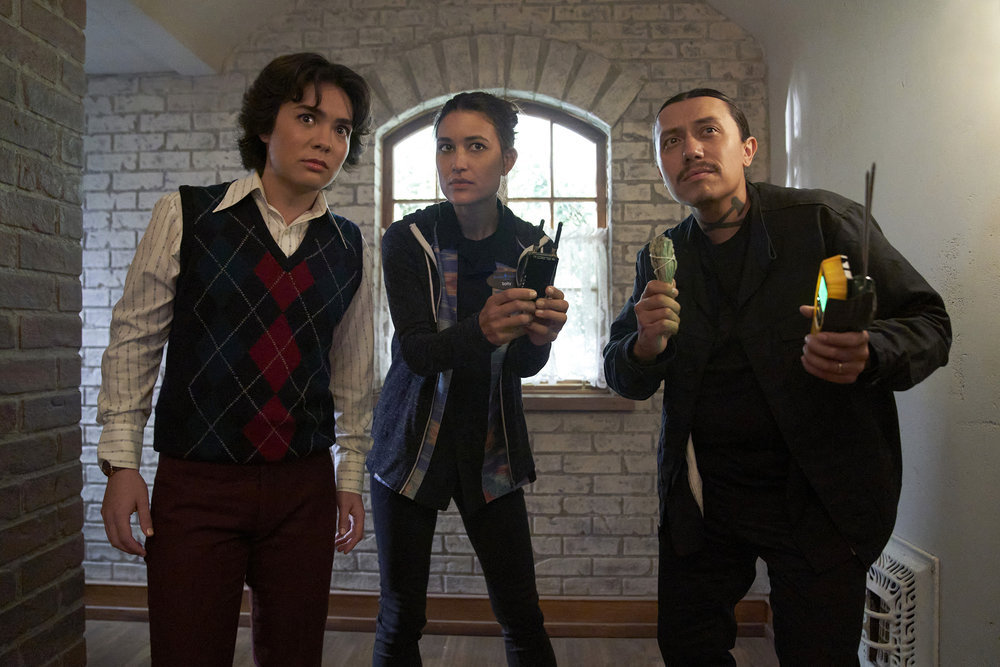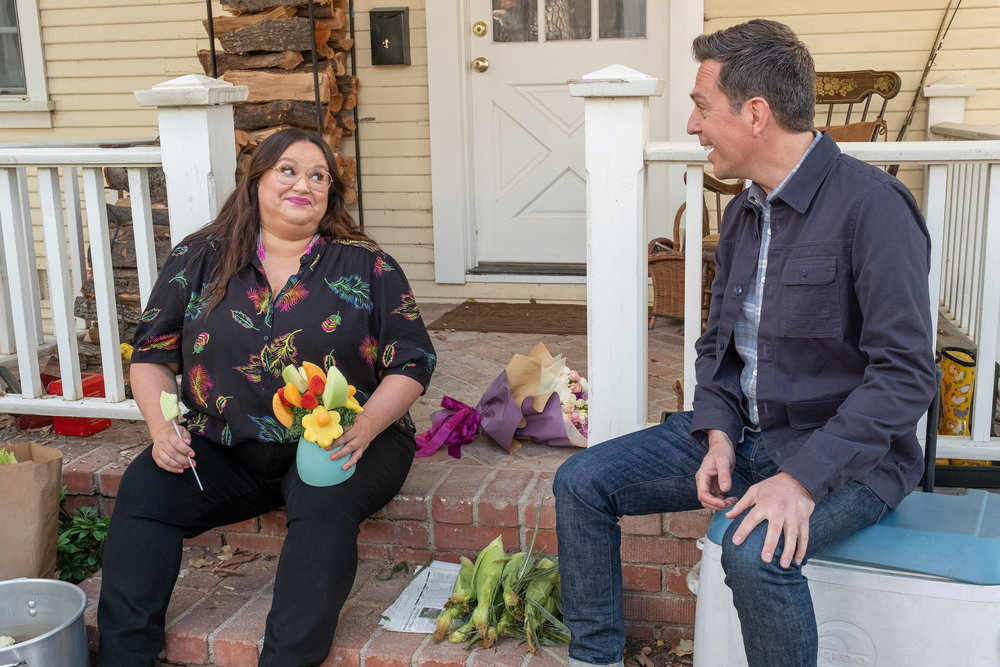Quick tidbit. One does not need to watch the first season of Peacock’s Rutherford Falls in order to follow its second season premiering on June 16th but man, the difference a season can make.
A quick recap of Season one of Rutherford Falls
The show’s first season focused on a fictional small Northeastern town. The humor was found in the awkward, microaggressive, and even straight-up offensive interactions between the town’s white citizens and members of the local Native American tribe, the also-fictional Minishonka Nation.
Season 2 still has groundbreaking Indigenous representation both in front and behind the camera. Almost all the characters return in some form or fashion. This includes Ed Helms’ Nathan Rutherford. Even though last season ended with Nathan driving off into the sunset after discovering all of his Season 1 cringe-inducing antics were now internet-famous due to being the focus of a moderately popular NPR podcast.
Season 2 sheds the training wheels that came with focusing on its most famous cast member

However, when Nathan makes his return it’s not to resume his usual place of entitlement with his usual bluster. In fact, Nathan is actively de-centering, in his own life and within the show overall. With a newly restrained Nathan, Season 2 sheds the training wheels that came with focusing on its most famous cast member. Now, it confidently strides into stories centered on Jana Schmieding’s Reagan Wells.
Reagan is a Minishonka woman, Nathan’s best friend, as well as the curator of the Minishonka cultural center. This center has been relocated from an ignored corner of the tribe’s casino to the historic building where Nathan’s family museum used to be. In season 2, Nathan and Reagan are still best friends. However, her storylines are now presented with a newfound autonomy. She navigates several uniquely Native experiences. For example, the problem with ‘pretendians’ (non-Indigenous people who claim to be Indigenous). As well as, blood quantum, tribal government red tape, and trying to decolonize inherently colonized spaces like a museum/cultural center.
Focusing on actual Native Issues

Due to the whitewashing of history, most of these concepts necessitate a Google search or two for most people to even be aware of them – let alone understand them. However, Rutherford Falls deftly describes and illustrates these nuanced subjects. This way most can walk away with working definitions for many complicated issues that exist within Native communities. The Indigenous writers that makeup half of the writers’ room are to thank for the intimacy and comfortability with these experiences necessary in order to distill them into a setup and punchline.

As more screentime is devoted to more of the Indigenous characters, season 2 smartly positioned Michael Greyeyes, its secret weapon, into more subplots. Greyeyes plays the shrewd and ambitious Minishonka casino manager, Terry Thomas, with incredible precision for humor, intimidation, and even vulnerability. Terry’s ability to seamlessly switch from voice of reason, to co-conspirator and foil to Reagan’s idealism, cements his place as the show’s most well-developed character. This allows the writers to place him as either opposition or cooperation (or sometimes both!) for almost any character.
Reagan and Terry are not the only characters who are enjoying a more expanded role. Nathan’s former assistant Bobbie Yang (Jesse Leigh) is stepping out from Nathan’s employment/shadow. And, due to a fortuitous turn of events, will spend this season making a run for the mayor’s office. Wayne (Bobby Wilson) and Sally (Julia Jones), Reagan’s honest frenemies, spend a lot of time outside of their casino workplace. But, they are inexplicably usually in uniform while they reluctantly, very reluctantly, warm up to Reagan.
Rutherford Falls is living up to its initial hype as “the first Native sitcom”

Rutherford Falls was placed on a pedestal for being the ‘first Native sitcom’ on a large mainstream platform made for mainstream audiences. Now, being first is one thing, doing something with that visibility is another.
The show already had an Indigenous showrunner and Indigenous writers. As well as, Indigenous characters brought to life by Indigenous actors. Now, the final piece – spotlighting Indigenous experiences. Rutherford Falls is living up to its initial hype as “the first Native sitcom”.

![Rutherford Falls Season 2 Reclaims The Spotlight For Jana Schmieding & The Indigenous Experience [REVIEW]](https://www.thathashtagshow.com/wp-content/uploads/2022/06/project_20220615_1041328-01-1200x640.png)


![The Ballad of Wallis Island: Lighthearted & Undeniably Charming [Review]](https://www.thathashtagshow.com/wp-content/uploads/2025/03/ballad-of-wallis-island-review-440x264.png)
![THS WEEKEND WATCH: SEPTEMBER 23rd [NEW RELEASES]](https://www.thathashtagshow.com/wp-content/uploads/2022/09/project_20220923_1152438-01-440x264.png)
